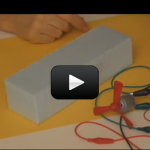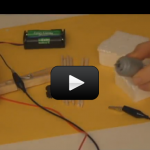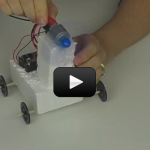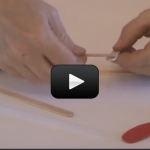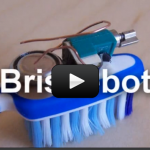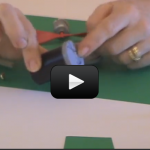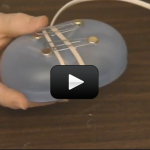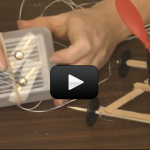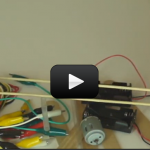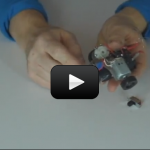Special Science Teleclass: Robotics
This is a recording of a recent live teleclass I did with thousands of kids from all over the world. I've included it here so you can participate and learn, too! Spark together electric motors, build homemade burglar alarms, wire up circuits and build your own robot from junk! Create your own whizzing, hopping, dancing, … Continue reading "Special Science Teleclass: Robotics" |
Waterbots
ROV stands for Remotely Operated Vehicle. These robots are used by scientists to explore the waters both offshore and in the deep sea, and often bring back samples and/or take video of their underwater findings. ROVs usually have a tether from the vehicle to the boat, which lightens up the load quite a bit (as … Continue reading "Waterbots" |
Jigglebots
Ever wonder how a cell phone vibrates? What mechanism could be in such a tiny space to make the entire phone jiggle around? Well, there’s a tiny motor inside with an off-center weight on the shaft, called an eccentric drive. You can still see eccentric drive mechanisms in older steam engines where the rotational motion … Continue reading "Jigglebots" |
Amphibious Robot
Amphibious vehicles is a craft which travels on both land and water. And it doesn't need to be limited to just cars. There are amphibious bicycles, buses, and RVs. Hovercraft are amphibious, too!Amphibious crafts started back in the 1800s as steam-powered barges. In the 1950s, the German Schimmwagen was a small jeep that could travel … Continue reading "Amphibious Robot" |
Propeller Car
The great news is that many of the problematic airplane troubles were figured out a long time ago by two amazing people: the Wright brothers. The Wright brothers also took an airfoil (a fancy word for “airplane wing”), turned it sideways, and rotated it around quickly to produce the first real propeller that could generate … Continue reading "Propeller Car" |
Bristle Brush Bot
This is the simplest robot you can make… out of old parts from around the house. While this little robot doesn’t use energy from the sun or wind, we’ve placed it here with other alternative energy projects because the parts come from the trash bin. This project is an extension of the Jigglebot robot from … Continue reading "Bristle Brush Bot" |
Race Cars
Racerbots can steer, unlike the Jigglebot. If you have more than one motor on your robot frame, you can turn either left, right, or spin on command. Wired remote control instructions follow this project. These racerbots are the toughest of these robots to build. The wheels need to be squarely set on their shafts, all … Continue reading "Race Cars" |
Remote Controls I
Radio control (RC) is a 100 year-old technology. RC requires both a transmitter and a receiver. The control box sends commands to the robot the same way you change channels on the TV with the remote. The difference between RC (radio control) and IR (infrared control) is in the frequency of the signals. With the … Continue reading "Remote Controls I" |
Remote Controls II
If you've made the waterbot, you can use this wired remove to make the motor turn both forward and reverse. All you need is an extra set of wires (telephone cable with two wires in it work great, or else twist two long wires together... they can be as long as you want.) Enclose the … Continue reading "Remote Controls II" |
BumperBot
If you have a pet, they’ll be sure to get a great workout chasing this nifty little robot. If you can, I totally encourage you to make two or more and have a contest! This BumperBot is one of the simplest robots you can make that uses a touch sensor, tricycle gear, and simple parts … Continue reading "BumperBot" |
Superfast Bug Bot
This project is advanced students. If you like tiny robots, then this one is for you! Powered by cheap hobby motors, this fast little robot zips ’round and avoids obstacles using momentary switches and an idler wheel for a tail. I recommend watching the entire video first, then rewind and watch again, this time building … Continue reading "Superfast Bug Bot" |
Underwater R.O.V. Robot
This project is for advanced students. Up until 200 years ago, people thought the oceans were bottomless. The diving bell was one of the first recorded attempts at undersea exploration, and was simply a five-foot inverted cup with viewing holes on a platform that lowered into the water, which allowed people to breathe the trapped … Continue reading "Underwater R.O.V. Robot" |


